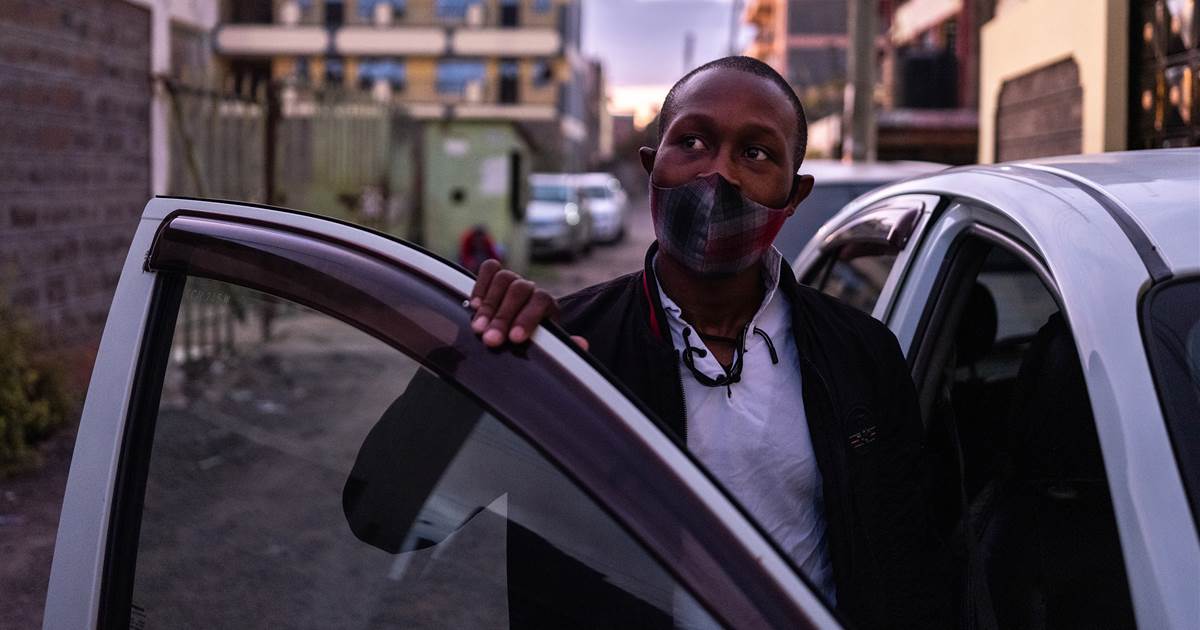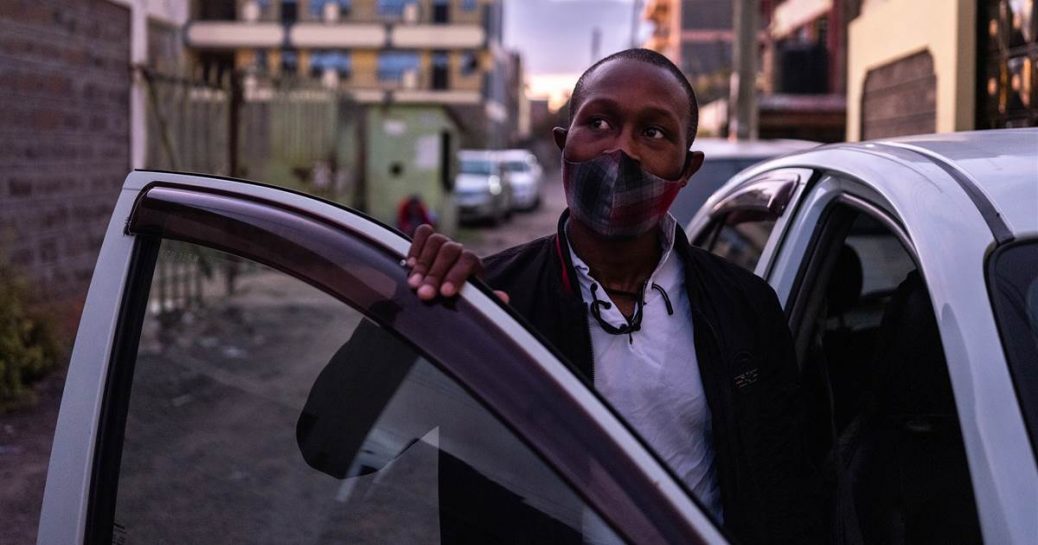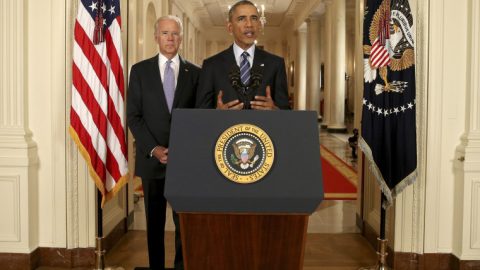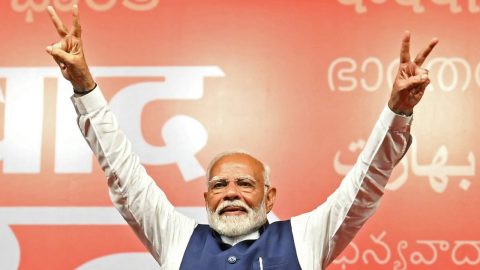
Many said they did not understand the contracts they had signed with Uber or with lenders. But Uber said that, at the onboarding process, it hosts training sessions to ensure that drivers do comprehend the terms and conditions.
Some Uber drivers in Kenya do pay off their loans. Some tie their success to strategic timing or to other sources of income. But many who have managed to pay off their cars still express dissatisfaction with Uber, saying that, even now that they own the cars outright, they are not making money.
Peter Mwinga, who quit driving for Uber last year, said he earns more selling fruit and vegetables out of the back of his Toyota Fielder, which he still has not paid off after three years as a driver. Standing next to the vehicle parked on the side of the road, filled with produce, he said he “wouldn’t advise” someone to join Uber.
A toxic relationship
When Uber started operating in Kenya in June, 2015 it built on the remains of an empire whose structure had changed little despite independence. Kenya is the former British base in Africa, and the colonial economy, based on extraction, relied on masses of workers who profited little.
Today, these laborers, classified as “informally employed,” account for 80 percent of Kenya’s population, according to a 2016 World Bank report. Many work in construction, clean houses or sell secondhand clothes, moving from sector to sector, rarely making ends meet. Young women walk through rich neighborhoods, offering to work as maids.
For a lot of laborers in Kenya, little appears different from colonial times other than the color of the leader’s skin.
Kenyans embraced Uber’s arrival. People needed jobs, and the taxi industry was privatized. Before Uber, a taxi rider could be charged almost as much in Nairobi as in New York. Most people got around on crowded “matatus” — unreliable buses that charged less than 50 shillings a ride, or about 50 cents.
Uber was a welcome addition: Drivers got more customers, prices were controlled by the app — a bit lower than if you called a private car — and riders could get an Uber quickly.
At the outset, Uber drivers were making 60 shillings per kilometer — about 97 cents a mile. The company took a 25 percent commission and established requirements for cars it would sign up: They had to be relatively new and about sedan size, and they had to have large engines, four doors and four seats.
The government paid little attention to the new company’s entry.
Private taxis, however, balked, saying Uber was hurting their business. In a few instances in 2015 and 2016, Ubers were burned and drivers were harassed. Over time, however, as customers became accustomed to the convenience and lower prices, drivers lost their regular clients and had to move onto the app to stay in business.
Uber grew its ranks by approaching taxis at airports and mall parking lots.
“It didn’t have to be a hard sell to drivers once the client numbers started going up,” Julie Zollmann, a doctoral candidate at Tufts University who has been studying finance, technology and livelihoods in Kenya since 2010, said by email.
“It solved a big problem for independent drivers who were only otherwise getting a few trips per day and, at that time, the rates were significantly higher than they are now,” she wrote.
Indeed, by then — as Munala did with Izwe — would-be drivers were using their savings and taking out loans through other finance platforms to lease cars that met the Uber standard.
Private taxi drivers, too, were selling their cars to buy Uber-compliant vehicles.
“There was a time when we were only selling cars to Uber drivers or guys who were doing business with Uber,” said Raymondu Gitau, a manager at Bolpak Trading Co., a dealership in Mombasa.
Gitau has worked in car dealerships for 20 years. His assessment is that drivers might be able to pay their bills while driving for Uber but that they “will not make anything.”
Drivers say that besides the car itself, they also pay for their public service vehicle badges, police clearance certificates, Uber training fees — which Uber calls background check fees — insurance and car inspections. All of the yearly expenses (except the one-time background check fee), in addition to maintenance, the cost of fuel, data plan for phones and regular car washes, eat into the bottom line.
The drivers interviewed unanimously said that they did not fully understand what they were signing up for when they agreed to work with Uber and that they just ticked the box at the end of the agreement.
Uber says that, as part of the onboarding process, it holds training sessions to ensure that drivers do indeed understand the terms and conditions.
Suiyanka Lempaa, a lawyer and human rights advocate with the Katiba Institute, an organization that promotes understanding of the Kenyan constitution, said the Uber contract appears to conflict with a right to “equality of arms.”
For example, Lempaa said, Uber can void contracts at will and without notice. The power runs afoul of the constitution, which provides the weaker party in such an agreement with the right to challenge the action promptly, under terms that are “procedurally fair,” he said.
Onduru, the Uber spokesperson, said that “in order to partner with Uber, drivers are asked to review and agree to Uber’s terms and conditions.”
She said Uber had nothing to say about Lempaa’s allegations about the constitutionality of the contract.
Working harder, earning less
In May 2016, Uber launched its first loan program with Sidian Bank, a commercial bank in Kenya. The loans were for cars belonging to Zohari Leasing. The company was established a month before the loan partnership was announced.
The hammer blow for many drivers came two months later, in July 2016.
After other digital taxi apps launched in Nairobi, Uber cut its prices by about 35 percent. Drivers who had taken out loans predicated on making 60 shillings an hour were especially upset. They were earning one-third less than they had expected.
Protests broke out, and hundreds went on strike, refusing to turn on the app.
At times, Uber mollified drivers with bonus opportunities and temporary hourly guarantees if drivers did not earn minimum thresholds. The company promised drivers that they would make the same money — or possibly even more — because demand would increase. And Uber said that if they did not, it would make up the difference, temporarily.
The price changes did lead to an increase in trips, but drivers were working harder and, mostly, earning less, said Alissa Orlando, who took over as Uber’s East Africa operations manager in August 2016 and has since left the company.
Moreover, she said, Uber was simultaneously onboarding more drivers than ever, meaning there was more competition for rides.
The Uber business model values high rates of driver/rider transactions to increase the company’s overall valuation by saturating markets with Uber, Orlando said.
The company is not built to make money off rides; it is built, Huber Horan, a transportation expert, alleged in a 2019 article in the public policy journal American Affairs, “to eliminate all meaningful competition and then profit from this quasi-monopoly power.”
That meant attracting drivers and cutting costs — an unsustainable structure for workers, she said.
“Every week, the sub-Saharan Africa team had a call to review the figures in the key performance indicator (KPI) tracker,” Orlando said. “The primary metric used to assess the growth and success of a city was the number of trips, as opposed to revenues or profits. So there was every incentive to drive prices as low as possible.”










Recent Comments